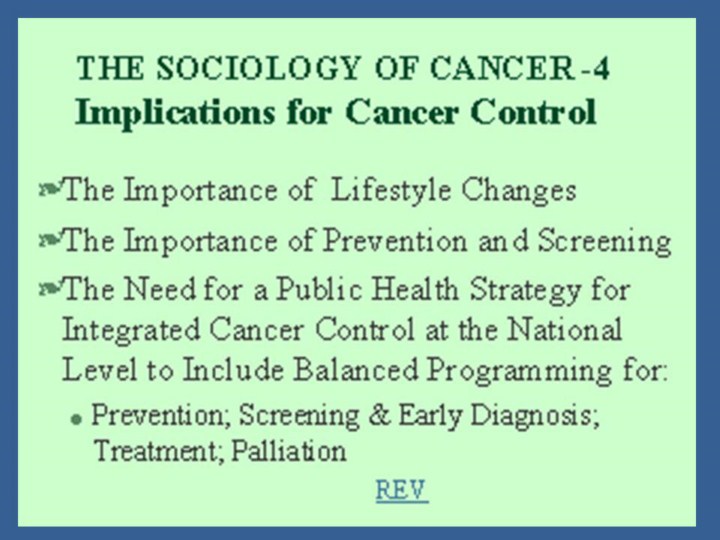Search inside of Supercourse and lectures in HTML and PPT format
 |
 |
front |1 |2 |3 |4 |5 |6 |7 |8 |9 |10 |11 |12 |13 |14 |15 |16 |17 |18 |19 |20 |21 |22 |23 |24 |25 |26 |27 |28 |29 |30 |31 |review |

These
social dimensions of cancer have important implications for the design of
cancer control programming. They stem from behavior patterns that people
evolve to meet their biological, psychological and social needs. These
patterns, in turn, create a lifestyle which influences cancer incidence.
They include the development of addictions to tobacco, drugs and alcohol,
the ways in which food is prepared, stored and eaten, and certain risk
patterns of personal interaction as with sexual mores. With tobacco, for
example, oral cancer predominates where tobacco is chewed, and lung cancer
where it is smoked. The changed cancer patterns that accompany the migration
of people provides an example of the influence of lifestyle on the
occurrence of cancer. When Mexicans migrate to the United States they take
on the cancer incidence patterns of their new country. |
|